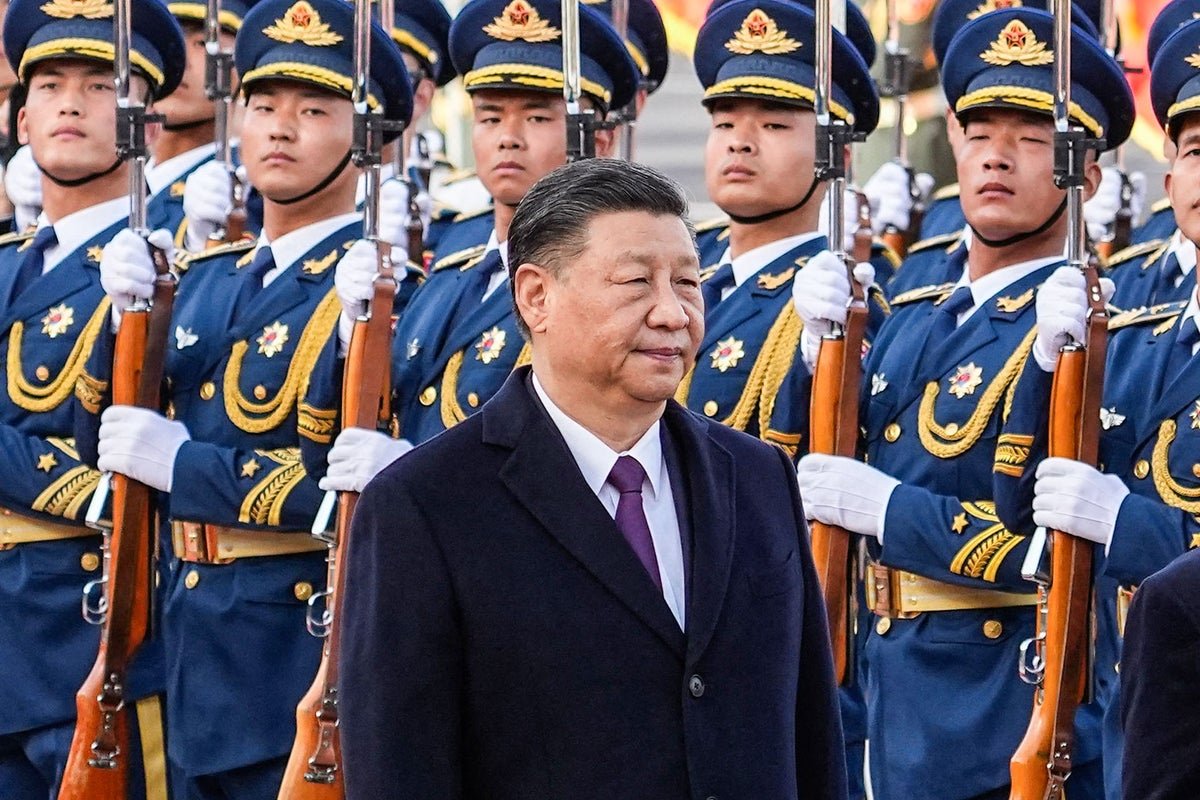Consider this job offer: a one-year contract to live and work in China by piloting, repairing, and manufacturing planes. The salary is up to $16,725 a month, with 30 days off a year. Accommodation is included, and you will receive an additional $700 per month for food. In addition, there is an additional $11,000 for each Japanese plane you destroy, without limit.
That’s the deal (with the value of the dollar adjusted to 2025) that a few hundred Americans accepted in 1941 to become the heroes, and some would even say the saviors, of China.
These U.S. pilots, mechanics, and support staff became members of the American Volunteer Group (AVG), later known as the Flying Tigers.
The group’s warplanes had the open mouth of a shark, full of teeth, on the nose, a fearsome symbol still used by some U.S. military aircraft.
The symbolic ferocity was backed by the AVG drivers in combat. The Flying Tigers are credited with destroying up to 497 Japanese aircraft while losing only 73.
Today, despite tensions between the United States and China, these American mercenaries are still revered in China.
China always remembers the contribution and sacrifice made by the United States and the American people during World War II, says a post on the Flying Tigers’ commemorative page of the Chinese state newspaper, People’s Daily Online.
The link is such that the daughter and granddaughter of the founder of the Flying Tigers are among the few Americans invited to this Wednesday’s military parade in Beijing to commemorate the end of World War II.
The formation of the Flying Tigers
By the late 1930s, China had been invaded by the armies of Imperial Japan and struggled to resist a better-equipped and unified enemy. Japan found virtually no opposition in the air, being able to bomb Chinese cities at will.
Leader Chiang Kai-shek, who had managed to vaguely unify the Chinese military warlords under a central government, later hired American Claire Chennault, a retired U.S. Army captain, to form an air force.

Chennault initially spent a few years creating an anti-aircraft alert network and building air bases across China, according to the Flying Tigers’ official website. In 1940, she was sent to the United States – still a neutral part – to find pilots and aircraft that could defend China from Japan.
With good contacts in President Franklin Roosevelt’s administration and a budget that allowed Americans to pay up to three times more than they earned in the U.S. military, Chennault managed to get the pilots he needed.
A deal was reached for 100 Curtiss P-40B fighters built for the UK to be sent to China.
In his memoirs, Chennault wrote that the P-40 he received lacked a modern sight.
“Their pilots” – they pointed their weapons through a ring and pole, a rudimentary and homemade look, instead of the more precise optical sights used by the Air Corps and the Royal Air Force,” he wrote.
With the lack of P-40 skill, Chennault made up for it with tactics, causing AVG pilots to plunge from a high position and fire their heavy machine guns at Japanese planes, structurally weaker but more maneuverable.
In a low-altitude air combat, with curves and turns, the P-40 would lose.
A heterogeneous group of pilots
The pilots Chennault signed were far from the flower and cream.
Ninety-nine pilots, along with support staff, undertook the trip to China in the fall of 1941, according to the history of the U.S. Department of Defense.
Some had just graduated from the flight school, others were pilots of heavy aircraft, or were ferry pilots for large bombers. They enlisted in the Far East adventure to make a lot of money or simply because they were bored.
Perhaps the best known of the Flying Tigers, the American Marine Greg Boyington, on whom the 1970s television series “Black Sheep Squadron” was based, did so for money.
After a painful divorce and by an ex-wife and several young children, he had ruined his credit and contracted considerable debts, and the Marine Corps had ordered him to submit a monthly report to his commander on how he justified his salary to settle those debts, according to the history of the U.S. Department of Defense group.

Chennault had to teach his dispersed group to be fighter pilots and to fight in groups practically from scratch.
The training was rigorous and deadly. Three pilots died prematurely in accidents.
During a day of training, known as Circus Day, eight P-40s were damaged because the pilots landed too hard or ground personnel rolled too fast, causing collisions.
Chennault expressed disappointment at his group’s first combat mission against Japanese bombers attacking the AVG base in Kunming, China, on December 20, 1941. I thought the pilots had lost discipline.
They tried almost impossible shots and then agreed that only luck had prevented them from crashing or tearing each other apart, says the Defense Department story.
Still, they shot down three Japanese bombers, losing only one fighter that ran out of fuel and made a forced landing.
The birth of a legend
The pilots quickly overcame their steep learning curve.
A few days after Kunming, they were deployed in Yangon, the capital of British colonial Burma, and a vital port for the line of supply of war materiel to allied Chinese troops facing the Japanese army.
Japanese bombers arrived in the city in waves for 11 days of the Christmas and New Year holidays. The Flying Tigers broke into Japanese formations and consolidated their fame.
The AVG had officially shot down 75 enemy aircraft with an undetermined number of likely casualties, the group’s website says. The losses of the AVG were two pilots and six aircraft.
The Flying Tigers spent a total of 10 weeks in Yangon, failing to deploy more than 25 P-40.

This small force faced a total of approximately 1,000 Japanese aircraft over southern Burma and Thailand. In 31 encounters, they destroyed 217 enemy aircraft and probably 43. Our combat losses were four pilots killed in the air, one killed while gunning, and another taken prisoner. Sixteen P-40s were destroyed, Chennault wrote in his memoirs.
Despite the heroic performance of the Flying Tigers in the air, Allied ground forces in Burma (now Myanmar) could not contain the Japanese. Yangon fell in March, and the AVG withdrew to the north, inland Burma.
But they had gained vital time for the Allied war effort, retaining Japanese aircraft that could have been used in India or elsewhere in China and the Pacific.
Jump to fame
Although the news did not run quickly in 1941-42, the United States, still shocked by the devastating Japanese attack on Pearl Harbor on December 7, 1941, longed for heroes. The Flying Tigers were the answer.
Republic Pictures chose John Wayne for the lead role of the film “Flying Tigers” in 1942. Posters on the tape showed a P-40 with shark teeth plummeting, in attack mode.
Meanwhile, sponsors of the Flying Tigers in Washington asked the Walt Disney Company to create a logo.
Disney artists devised a winged Bengal tiger jumping through a stylized symbol of Victory’s V, according to the history of the United States.

The logo did not include the iconic shark mouth that the Flying Tigers aircraft are known for.
Chennault wrote that the shark’s mouth did not originate in his group, but was copied from the British P-40 fighters from North Africa, who in turn could have copied from the German Luftwaffe.
“I will never understand how the term Flying Tigers emerged from the P-40s with a shark nose,” he wrote.
Why country fight
When the U.S. entered the war, its military leaders wanted the Flying Tigers to join the U.S. Army Air Corps.
But the pilots themselves wanted to return to their original services (many came from the Navy or the Marine Corps) or stayed as civilian contractors of the Chinese government, where remuneration was much better.
Most told Chennault they would resign rather than do what Washington wanted.
When the Army threatened to recruit them as plain soldiers if they did not volunteer, they considered enlisting.
Chennault was appointed U.S. Army Brigadier General and agreed that the Flying Tigers would become an American military unit on July 4, 1942.
Although the Flying Tigers continued to wreak havoc in Japan in the spring of 1942, attacking ground targets and planes from China to Burma and Indochina (present-day Vietnam), it was clear that the force was entering its sunset, according to U.S. military history.
The AVG carried out its final mission on the day of her disappearance, on 4 July.
Four P-40s faced a dozen Japanese fighters over Hengyang, China. Americans knocked down six Japanese without losses, according to a landmark U.S. report.

A contribution that has not been forgotten
Despite tense relations with Washington in recent years, the bond that American mercenaries forged with China 80 years ago remains intact.
There are at least half a dozen museums dedicated to or that house exhibitions about Flying Tigers in China, and have been the subject of contemporary films and cartoons.
The Flying Tiger Patrimonial Park is located on the site of an old airfield in Guilin, where Chennault had his command post in a cave.
In the United States, the Louisiana museum website that bears Chennault’s name summarizes what he hoped would be his legacy at the top of his home page, using the last lines of the general’s memoir: I look forward to the symbol of the Flying Tiger remaining high as necessary and that he will always be remembered on both sides of the Pacific as the symbol of two great peoples working for a common goal in war and peace.














